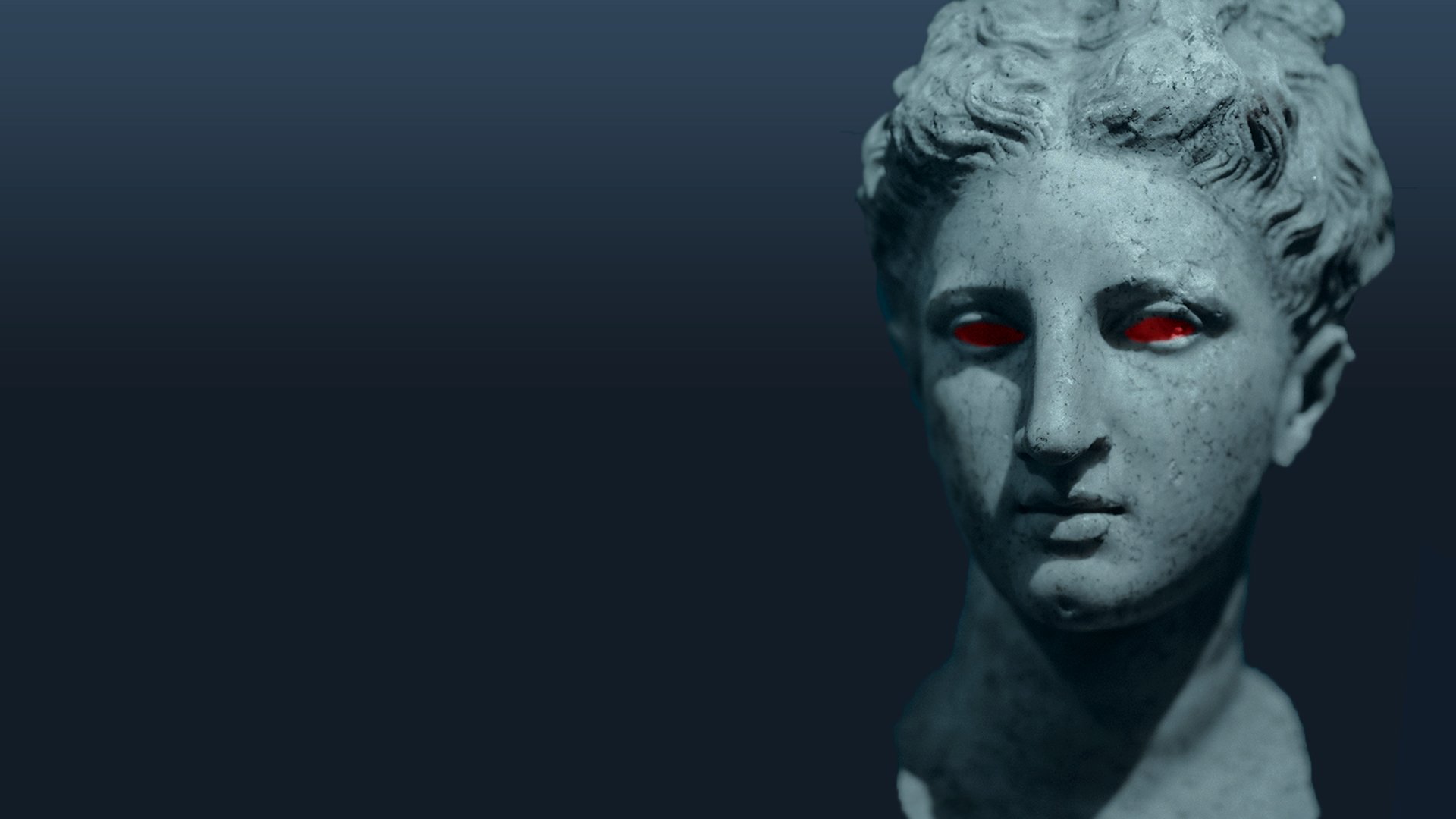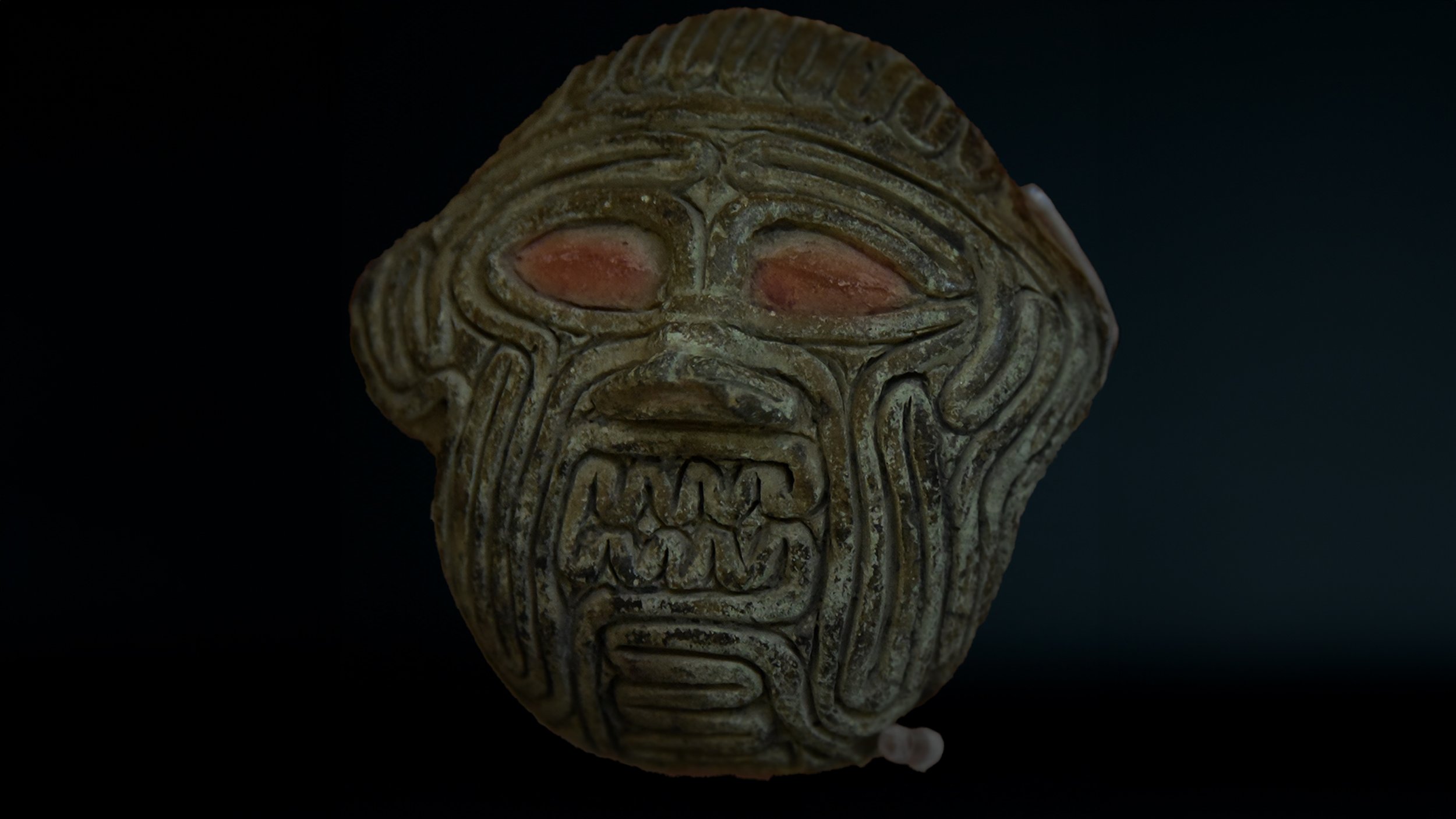
Listen here:
Modes of Thought in Anterran Literature, Second Year Classics, C667, Professor [REDACTED].
The recent archeological discovery uncovered at the bottom of the Pacific Ocean will be explored, providing opportunities for analysis of the writings of the earliest human society, [REDACTED] years older than previously known to exist. The class will cover literature, religion, and philosophy; topics include Creation Myths, Rituals, Currency, Caste System and the Anterran Concept of Time. Wednesdays, Room 014 Brussels Hall, Harbridge University
TRANSCRIPTS ARE IN PROGRESS
SEASON 3
Episode 301 The Conference
Episode 302 Flight
Episode 303 Death and Burial
Episode 304 The Pantheon of the 2nd Empire
Episode 305 Holliswood Psychiatric Hospital
SEASON 4
Episode 401 Medicine
Episode 402 Keepers of the Dark
Episode 403 Early Political Structures
Episode 404 Community
Episode 405 Misinformation and the End of the 2nd Empire
An ukiyo-e by Yoshitoshi depicting Minamoto no Yorimitsu and Kintarō, 1886, Warriors Trembling with Courage.
In reference to our upcoming discussion of the hero myth of Yalitsok’aa and the dawn of 3rd Empire Anterra.
Flood Myths are ubiquitous, but the extent to which they are relevant to Anterra is under debate. There is the possibly that there’s a link to Utnapishtim, the one man to survive the flood as referenced in the Epic of Gilgamesh, though evidence is tenuous.
Trephination, or cutting a hole in the cranium in order to relieve ‘pressure,’ is one of the oldest medical practices. It was seen in multiple cultures around the world, and even made an unlikely comeback in the sixties, as evidenced by folk singer JULIE FELIX and her oddly celebratory song “Blood Brain Volume.”

A representation based on a LIDAR scan made during the rescue of the Chinese military submarine. The original is classified, this is only a facsimile, and not intended for research.
After our discussion of Shinto, I wanted to share some music- very powerful, and related to the work of the late Dev Engstrom.
You can listen here.

This carving of Humbaba, the deity killed by Gilgamesh and Enkidu on their first adventure, is made to look like the entrails of a goat. Animal innards were often used for purposes of divination (this is true across many cultures). On the back there is a warning - if an animal’s entrails look like the face of Humbaba, it means revolution.
Interesting article by Julien d'Huy in Scientific American regarding comparative mythological and the origins and early migration of human society.
“Folklorists, anthropologists, ethnologists and linguists have long puzzled over why complex mythical stories that surface in cultures widely separated in space and time are strikingly similar. In recent years a promising scientific approach to comparative mythology has emerged in which researchers apply conceptual tools that biologists use to decipher the evolution of living species. In the hands of those who analyze myths, the method, known as phylogenetic analysis, consists of connecting successive versions of a mythical story and constructing a family tree that traces the evolution of the myth over time.”

Below are examples of how pervasive the carvings in Anterra are- they were a culture that lived among the written word.



China News Daily reports on the discovery of ancient ruins at the bottom of Fuxian Lake, Yunnan Province.
A Chinese submarine archaeology team stationed in Fuxian Lake… discovered lots of blocks scattered on the lake bottom. With the advanced use of detectors, they saw stones that formed a wall seen on a sonar display along with various flagstones. High stairs appeared in front of them. Flagstones covered with moss seemed to reveal an ancient sunken city.
Also see this blog post at GoKunming.
From China Travel Guide:
The detected ancient city reached an area of 2.4 sq km (1 sq mi) with 8 main buildings. The most amazing one is Fuxian Lake Pyramid. This 5-storey building is 21 m (69 ft) high and the shape is like the pyramid of Maya. A stage-style building with many bronze buckles was speculated to be a Sacrificial Altar. There are many 8 to 15 cm (3 to 6 in) holes in the under-water buildings like a “Hoofprint of Sea Horse (a kind of animal in legend of the lake)”. Researchers consider that they were probably used for building houses.
In this interview about Ancient Greeks’ relationship with technology, Adrienne Mayor posits many interesting ideas that might contrast with common preconceptions about technology in the classical world. I was particularly struck by this quote:
Actually, the Greeks tended to look backwards at high technology, imagining that gods and people in antiquity might have had skills that surpass what people could do today.








